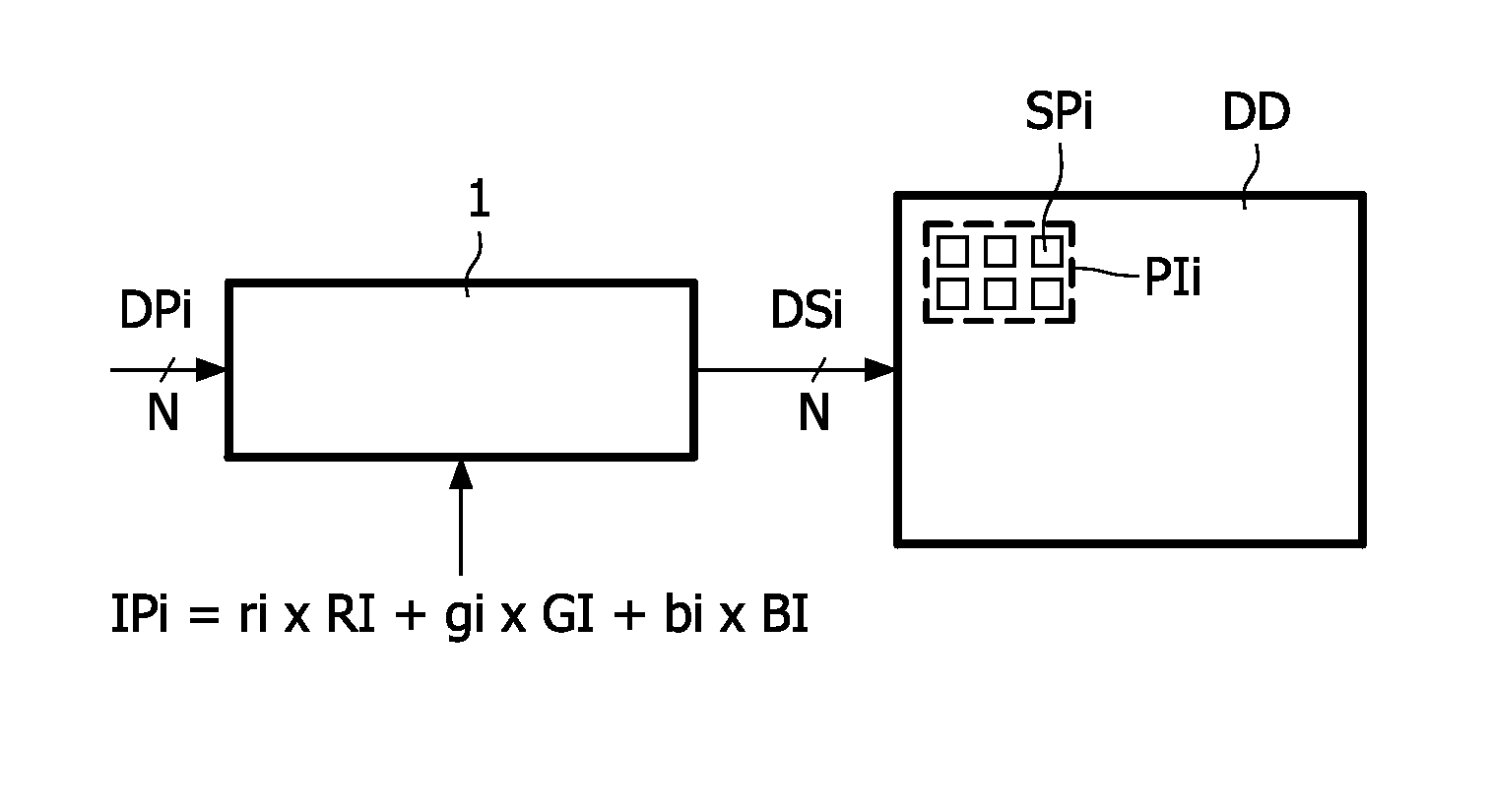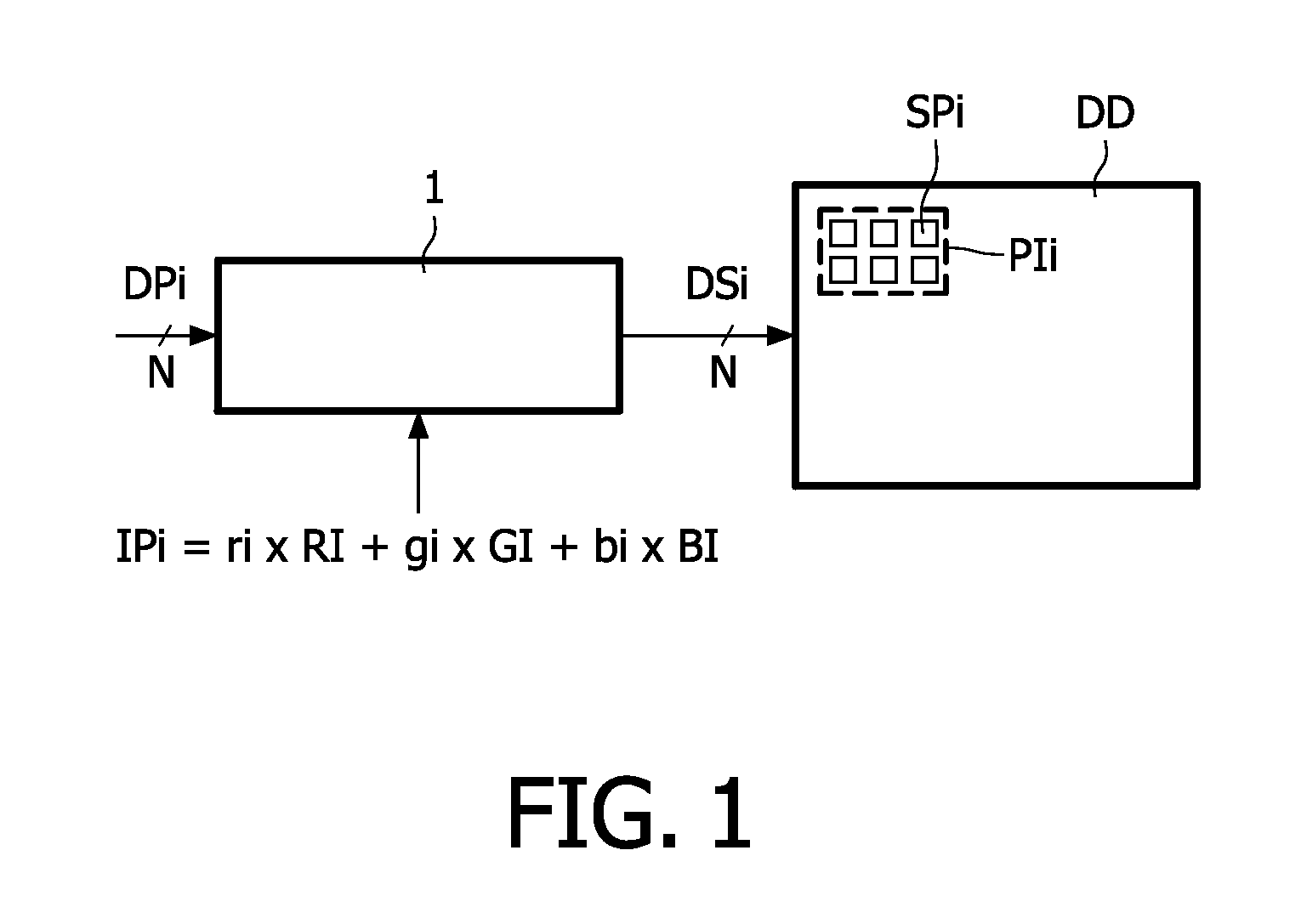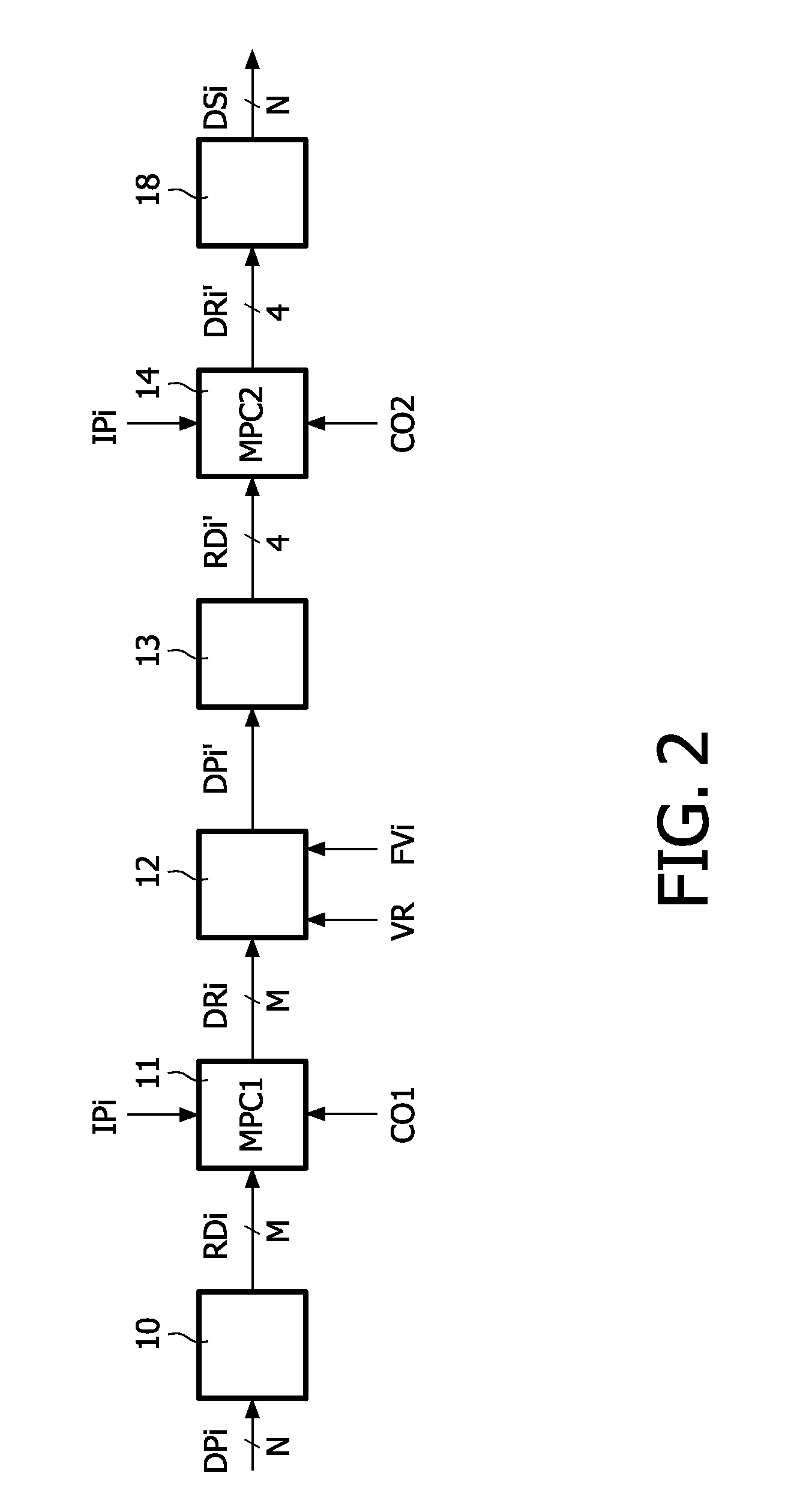Multi-primary conversion
a multi-primary conversion and conversion technology, applied in the field of multi-primary conversion, can solve problems such as discontinuities that may occur across borders between different triads, and achieve the effect of reducing discontinuities across triad borders
- Summary
- Abstract
- Description
- Claims
- Application Information
AI Technical Summary
Benefits of technology
Problems solved by technology
Method used
Image
Examples
Embodiment Construction
[0028]FIG. 1 schematically shows a display apparatus with a converter for converting a three primary input signal to a multi-primary drive signal. The display apparatus comprises the converter 1 and a display device DD.
[0029]The display device DD comprises pixels PIi which comprise N sub-pixels SPi. For clarity, only one pixel PIi is shown. Usually, the display device is able to display images and comprises a plurality of pixels PIi arranged in a matrix like structure. It has to be noted that the index i is used to indicate the item indicated by the preceding letters in general for a plurality of these items. For example, the pixel PIi is any one of the pixels PI or refers to the pixels PI in general. The sub-pixels SPi of the pixel PIi emit different light forming the display primaries DPi. Each one of the sub-pixels SPi is driven with a pixel drive value DSi. In the example shown, the pixels PIi comprise N equal to six sub-pixels SPi and thus six pixel drive values DSi are require...
PUM
 Login to View More
Login to View More Abstract
Description
Claims
Application Information
 Login to View More
Login to View More - R&D
- Intellectual Property
- Life Sciences
- Materials
- Tech Scout
- Unparalleled Data Quality
- Higher Quality Content
- 60% Fewer Hallucinations
Browse by: Latest US Patents, China's latest patents, Technical Efficacy Thesaurus, Application Domain, Technology Topic, Popular Technical Reports.
© 2025 PatSnap. All rights reserved.Legal|Privacy policy|Modern Slavery Act Transparency Statement|Sitemap|About US| Contact US: help@patsnap.com



